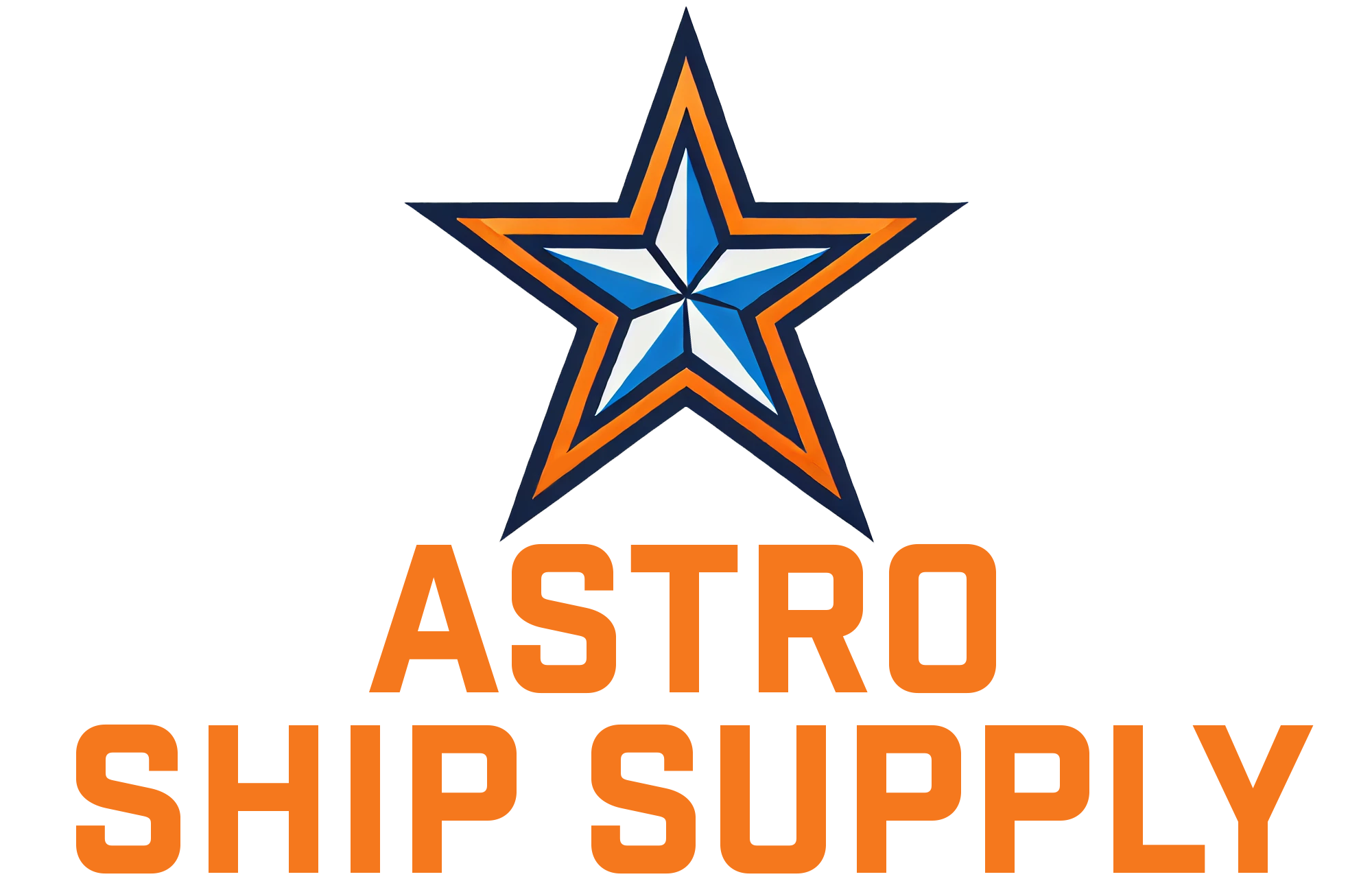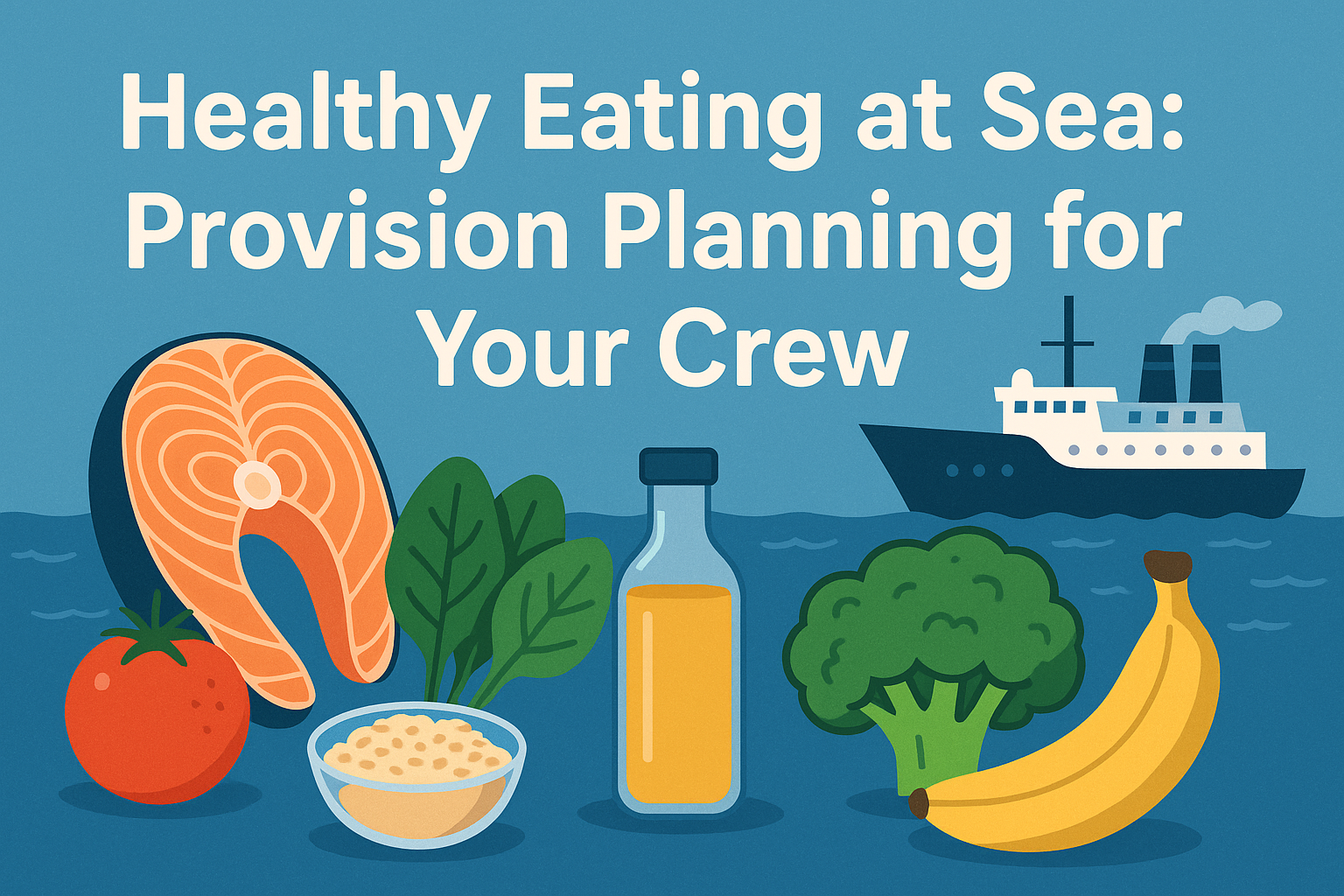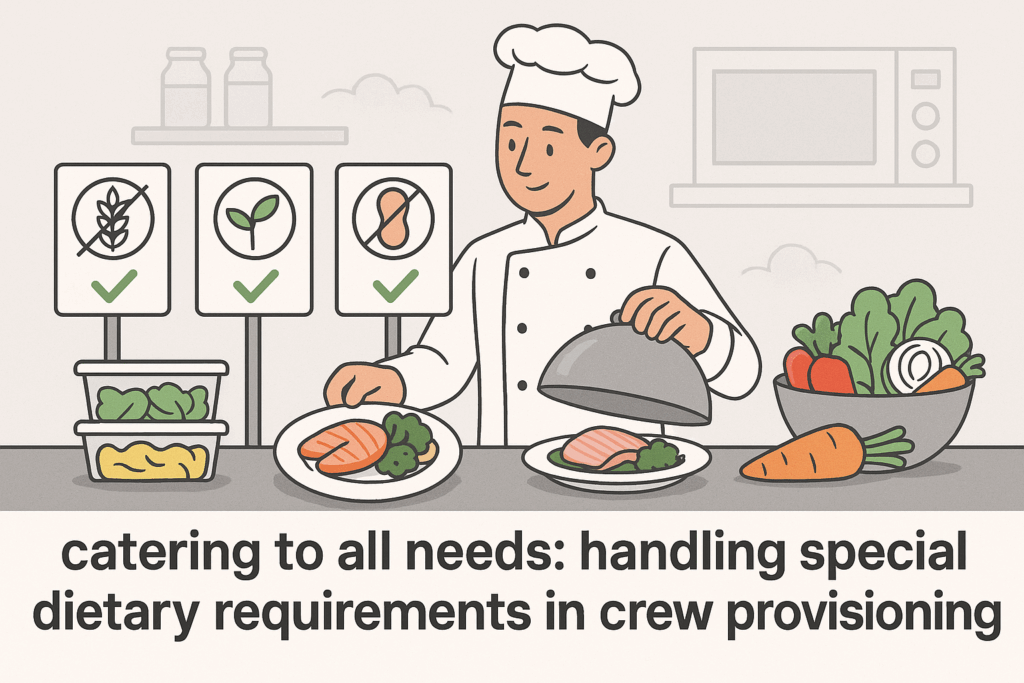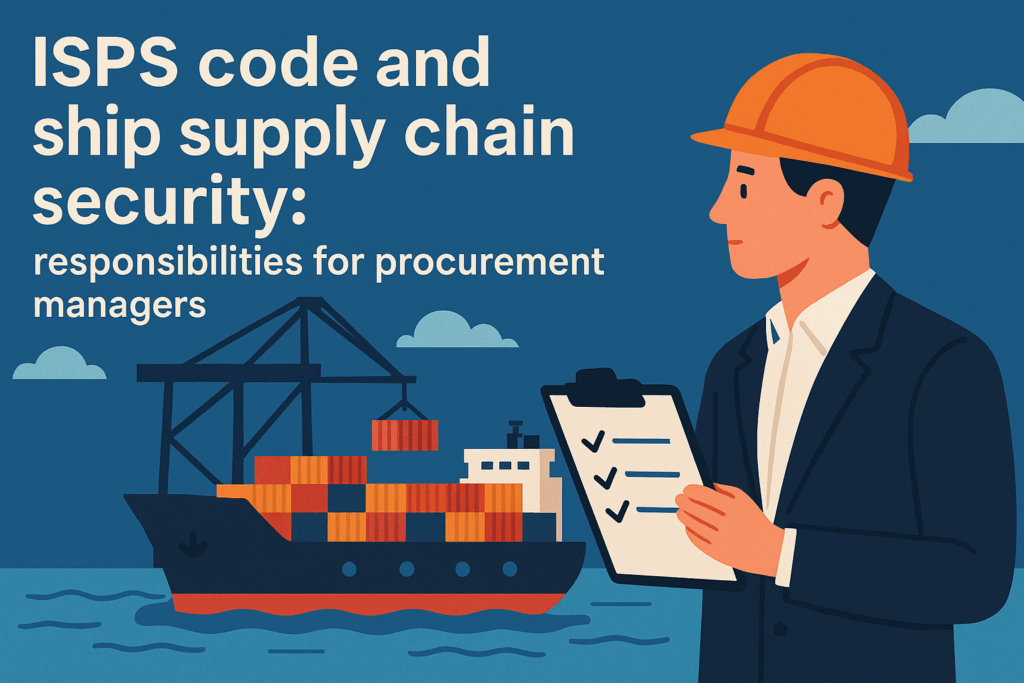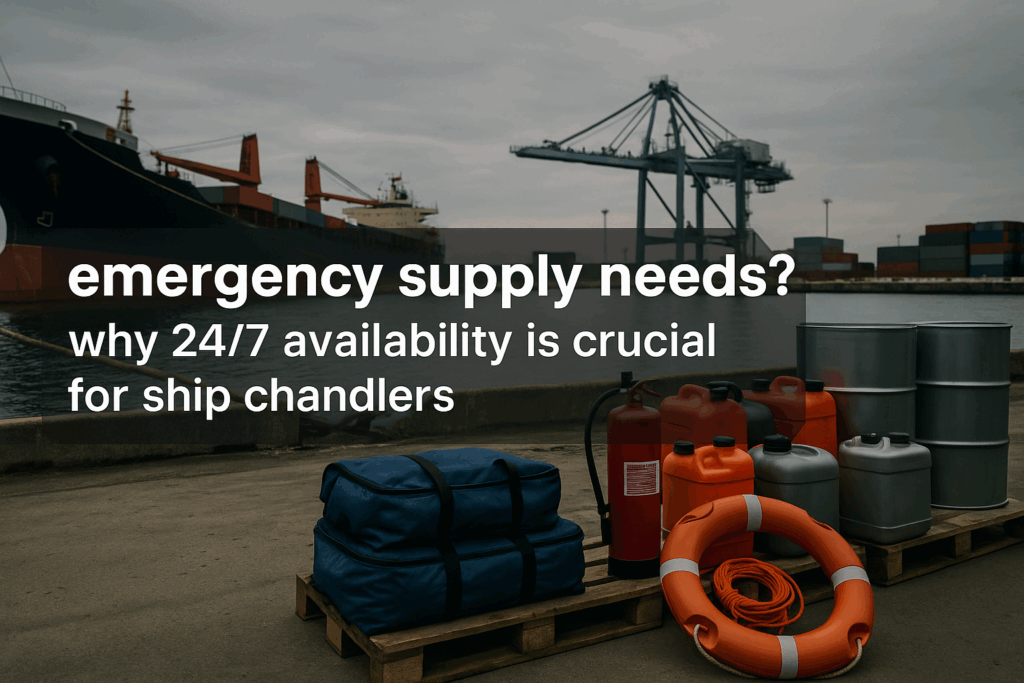Why Crew Nutrition is Non-Negotiable for Maritime Success
Life at sea presents unique challenges, and maintaining the health, morale, and efficiency of the crew is paramount to the success and safety of any voyage. While factors like vessel maintenance and navigation are crucial, one foundational element often dictates the daily reality onboard: food. High-quality, nutritious, and appealing provisions are not just a perk; they are a fundamental necessity. A well-fed crew is generally healthier, happier, more alert, and ultimately, more productive. Conversely, poor nutrition can lead to fatigue, increased susceptibility to illness, low morale, and even cognitive impairment, directly impacting safety and operational performance.
Investing in a robust provision plan goes beyond simply filling stomachs. It’s an investment in your most valuable asset – your people. It demonstrates a commitment to their well-being, fostering loyalty and contributing to a positive onboard culture. In the demanding environment of maritime operations, ensuring access to balanced and enjoyable meals is a cornerstone of effective ship management.
The Complexities of Provisioning for Voyages
Supplying a vessel with food for days, weeks, or even months at sea is a logistical puzzle far more intricate than stocking a land-based kitchen. Ship operators and chandlers face a unique set of hurdles:
-
- Storage Limitations: Space, especially refrigerated and frozen storage, is always at a premium on vessels. This dictates the types and quantities of provisions that can be carried.
- Extended Shelf-Life Requirements: For longer voyages, many items must remain fresh and safe for consumption for extended periods, requiring careful selection and storage techniques.
* Variable Voyage Durations & Conditions: Routes, weather conditions, and unexpected delays can impact consumption rates and the ability to replenish supplies.
* Diverse Crew Needs: Modern crews are often multinational, bringing a wide range of dietary preferences, cultural requirements (e.g., Halal, Kosher), and potential allergies or medical dietary restrictions (e.g., diabetic, low-sodium).
* Port State Controls & Customs: Strict regulations regarding food importation, safety standards, and bonded stores must be adhered to globally.
* Maintaining Quality & Safety: Ensuring provisions remain safe from spoilage and contamination from source to consumption requires rigorous quality control and adherence to food safety protocols like HACCP.
Successfully navigating these complexities requires meticulous planning, expertise in food logistics, and a deep understanding of maritime operations.
Strategic Provision Planning: Key Considerations
Developing an effective provision plan involves balancing several critical factors. It’s not just about quantity; it’s about quality, variety, and suitability.
H3: Nutritional Balance: The Foundation of Crew Health
Seafaring is physically and mentally demanding. Crew diets must provide adequate energy and essential nutrients:
- Macronutrients: Sufficient protein for muscle maintenance, carbohydrates for energy (prioritizing complex carbs), and healthy fats.
- Micronutrients: Vitamins (especially C and D, often deficient in seafarers) and minerals are crucial for immune function, bone health, and preventing deficiency diseases like scurvy.
- Hydration: Access to clean drinking water and other hydrating beverages is essential.
Menu planning should aim for balanced meals incorporating fruits, vegetables (fresh, frozen, or canned), lean proteins, dairy or alternatives, and whole grains.
H3: Variety and Crew Preferences: Combating Menu Fatigue
Eating the same meals repeatedly leads to “menu fatigue,” negatively impacting morale. A good provision plan incorporates:
-
- Rotational Menus: Planning weekly or bi-weekly menu cycles.
* Theme Nights: Introducing special meals (e.g., BBQ night, national cuisine nights) can boost spirits.
* Crew Input: Whenever possible, soliciting feedback or requests from the crew can increase satisfaction.
* Diverse Ingredients: Stocking a range of spices, sauces, and core ingredients allows cooks to vary preparations.
H3: Catering to Special Dietary Needs
Effectively managing dietary restrictions is crucial for crew health and inclusivity.
- Clear Identification: Proper labeling of ingredients and prepared meals.
- Segregated Preparation: Procedures to prevent cross-contamination for allergens.
- Sufficient Alternatives: Ensuring adequate stock of vegetarian, vegan, gluten-free, Halal, Kosher, or other necessary options based on crew declarations.
H4: Quality vs. Cost: Finding the Sweet Spot
While budget constraints are a reality, compromising heavily on food quality is often a false economy. Poor quality provisions can lead to higher waste, crew dissatisfaction, and potential health issues. Partnering with a reputable ship chandler who understands this balance and has strong supplier relationships is key. Look for suppliers who emphasize quality control throughout their supply chain, ensuring you receive fresh, safe, and compliant goods.
Fresh vs. Frozen vs. Shelf-Stable: A Comparative Look
Choosing the right format for provisions depends on storage capacity, voyage length, and menu planning. Each has its place:
| Provision Type | Pros | Cons | Best Use Case at Sea |
|---|---|---|---|
| Fresh Produce (Fruits, Vegetables, Dairy, Meat) | Highest nutritional value (initially), best taste/texture, high crew appeal. | Short shelf life, requires refrigeration/specific storage, susceptible to spoilage, higher cost/logistical complexity. | Beginning of voyages, short trips, consumption within days of delivery. Requires careful inventory management (FIFO). |
| Frozen Goods (Meat, Fish, Vegetables, Fruits, Prepared Meals) | Extended shelf life, retains good nutritional value, convenient, allows for variety year-round. | Requires significant freezer space, quality depends on freezing process, texture can sometimes be affected upon thawing. | Long voyages, stocking staple proteins and vegetables, ensuring consistent availability. |
| Shelf-Stable (Canned Goods, Dried Goods, Grains, UHT Milk) | Longest shelf life, requires no refrigeration, often cost-effective, good for emergency stocks. | Can be higher in sodium/preservatives, potential nutrient loss during processing, taste/texture may differ from fresh/frozen. | Essential for long voyages, backup supplies, items like grains, legumes, pasta, sauces, canned fish/fruits/vegetables. |
A balanced approach, utilizing all three types strategically, is usually the most effective way to ensure variety, nutrition, and longevity of supplies.
Case Scenario: Provisioning the M/V Navigator
Vessel: M/V Navigator, a container ship.
Voyage: 45-day trip from Rotterdam to Singapore.
Crew: 22 members (European, Filipino, Indian).
Challenge: Ensure varied, nutritious meals meeting Halal requirements for several crew members, one diabetic crew member, while managing limited cold storage space and adhering to budget.
Approach:
- Detailed Menu Planning: Create a 14-day rotating menu incorporating dishes palatable to all nationalities. Clearly mark Halal options and ensure low-sugar/complex carb choices are available at every meal for the diabetic crew member.
- Strategic Sourcing: Work closely with the ship chandler. Prioritize high-quality frozen Halal meats and fish. Select versatile vegetables available both fresh (for early voyage) and frozen/canned (for later). Order diabetic-friendly snacks and sugar substitutes.
- Storage Optimization: Use vacuum sealing for some fresh items to extend life. Implement strict First-In, First-Out (FIFO) for all perishables. Optimize freezer space by removing excess packaging where possible.
- Leveraging Shelf-Stable: Rely heavily on rice, lentils, pasta, canned tomatoes, beans, and UHT milk as staples. Stock various spices to allow cooks flexibility in flavour profiles.
- Chandler Communication: Provide the detailed list well in advance, clearly specifying dietary requirements and quality expectations. Verify certifications (like HACCP, ISO) of the chandler to ensure food safety compliance.
Outcome: By meticulous planning and collaborating with a reliable chandler adept at handling diverse needs, the M/V Navigator ensures crew satisfaction and health throughout the long voyage, despite the logistical constraints.
Best Practices for Onboard Food Management
Effective provision planning extends to how food is managed once onboard:
-
- Inventory Management: Maintain accurate records of stock levels. Implement FIFO rigorously to minimize waste.
- Food Safety & Hygiene: Adhere strictly to galley hygiene protocols. Monitor storage temperatures (refrigerators, freezers) daily. Ensure proper food handling and cooking procedures.
* Waste Reduction: Plan meals to utilize ingredients efficiently. Repurpose leftovers safely. Monitor waste to identify areas for improvement in ordering or preparation.
* Regular Inspections: Conduct regular checks for pests and spoilage in storage areas.
- Communication: Maintain open communication between the bridge, the galley, and the crew regarding supplies and preferences.
The Crucial Role of Your Ship Chandler
Choosing the right ship chandler is critical to the success of your provision planning. A reliable partner offers more than just delivery; they provide expertise, quality assurance, and peace of mind. Look for a chandler who:
- Understands Maritime Needs: Experienced in the unique demands of ship supply, including urgency, logistics, and compliance.
- Guarantees Quality: Implements strict quality control measures and adheres to international food safety standards (e.g., HACCP, ISO 9001:2015). Ask about their sourcing practices and supplier vetting.
- Offers Comprehensive Solutions: Can supply a wide range of high-quality provisions, beverages, and potentially bonded stores and cabin supplies, simplifying procurement.
- Ensures Compliance: Knowledgeable about customs regulations, health codes (like Texas Department of State Health Services compliance), and security protocols (ISPS Code).
- Provides Reliable Delivery: Offers timely, efficient delivery to your vessel, minimizing delays. Look for 24/7 availability for urgent needs.
- Builds Trust: Operates with transparency and a commitment to customer satisfaction.
Your chandler acts as an extension of your operations. Partnering with a service like Astro Ship Supply, committed to excellence and compliance, ensures your crew receives provisions that meet the highest standards, supporting their health and your vessel’s smooth operation.
Quotable Insights: Healthy Provisioning Pillars
- “Crew well-being starts on the plate; prioritizing nutrition is prioritizing safety and efficiency.”
- “Effective provision planning balances nutrition, variety, safety, and budget – it’s a complex equation.”
- “Never underestimate the power of variety; menu fatigue impacts morale more than you think.”
- “Fresh, frozen, or canned? Strategic use of all three is key to managing long voyages.”
- “Your ship chandler isn’t just a supplier; they are a critical partner in crew welfare and operational success.”
- “Compliance isn’t optional; ensuring food safety (HACCP, ISO) protects your crew and your reputation.”
Frequently Asked Questions (FAQ) About Ship Provisioning
How much food should be ordered per crew member per day?
While exact amounts vary based on crew nationality, type of work, and climate, a general guideline is around 3,500-4,500 calories per person per day for moderately active seafarers. Planning often involves calculating daily rations per person for staples (e.g., rice, meat, vegetables, dairy, fruits) and adding a buffer (typically 10-20%) for contingency.
What’s the best way to handle diverse dietary requirements (e.g., Halal, vegetarian, allergies)?
The best approach involves:
- Collecting detailed dietary information from all crew members before the voyage.
- Planning menus that naturally include compliant options or can be easily adapted.
- Sourcing certified ingredients (e.g., Halal meat from a verified supplier).
- Ensuring the galley staff is trained in safe food handling to prevent cross-contamination (especially for allergies).
- Clearly communicating requirements to your ship chandler and verifying they can meet them.
How can we ensure food safety standards are met throughout the supply chain?
Partner with ship chandlers who demonstrate a strong commitment to food safety. Look for certifications like HACCP (Hazard Analysis and Critical Control Points) and ISO 9001:2015 (Quality Management). Inquire about their supplier vetting process, cold chain management, and delivery procedures. Onboard, strict adherence to galley hygiene, temperature control, and proper food handling practices are essential.
How do you balance the need for fresh produce with the limitations of long voyages?
A tiered approach works best:
- Maximize fresh produce consumption early in the voyage.
- Select hardier fresh items (e.g., potatoes, onions, cabbage, apples, citrus) that last longer.
- Utilize proper storage techniques (e.g., controlled atmosphere, optimal temperatures).
- Supplement heavily with high-quality frozen fruits and vegetables.
- Rely on canned fruits and vegetables (packed in water or natural juice preferably) for the latter parts of the voyage and as backup.
This ensures continued access to essential vitamins and minerals.
What are the key qualities to look for in a ship chandler for provisions?
Key qualities include:
- Reliability: Consistent quality and on-time delivery. 24/7 availability is often crucial.
- Quality Assurance: Strict adherence to food safety standards (HACCP, ISO) and verifiable quality control processes.
- Range & Expertise: Ability to source a wide variety of international foods, handle special dietary needs, and understand maritime logistics.
- Compliance Knowledge: Understanding of customs, port health, and ISPS regulations.
- Transparency: Clear communication and fair pricing.
- Strong Reputation: Positive feedback from other operators in the region (e.g., Port of Houston, Gulf Coast).
Conclusion: Investing in Your Crew Through Quality Provisions
Ensuring your crew has access to healthy, safe, and appealing food is more than just a logistical task; it’s a strategic imperative. It directly impacts operational safety, crew morale, health, and overall efficiency. While the challenges of provisioning at sea are significant, meticulous planning, adherence to best practices, and crucially, partnering with a knowledgeable and reliable ship chandler can make all the difference. By prioritizing quality provisions and robust food management, you invest directly in the heart of your maritime operation – your crew – ensuring smoother sailing and a more successful voyage.
